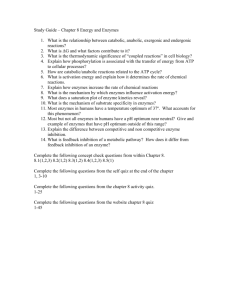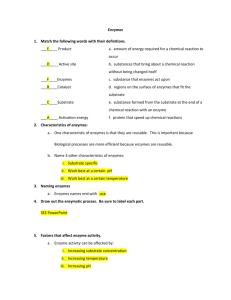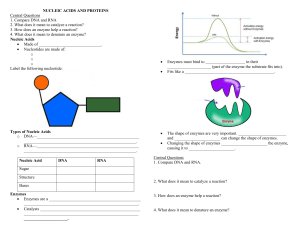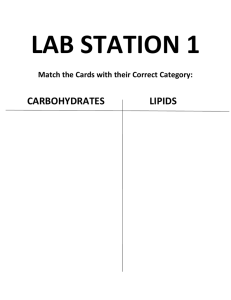Enzymes: Temperature & pH Effects | High School Biology
advertisement
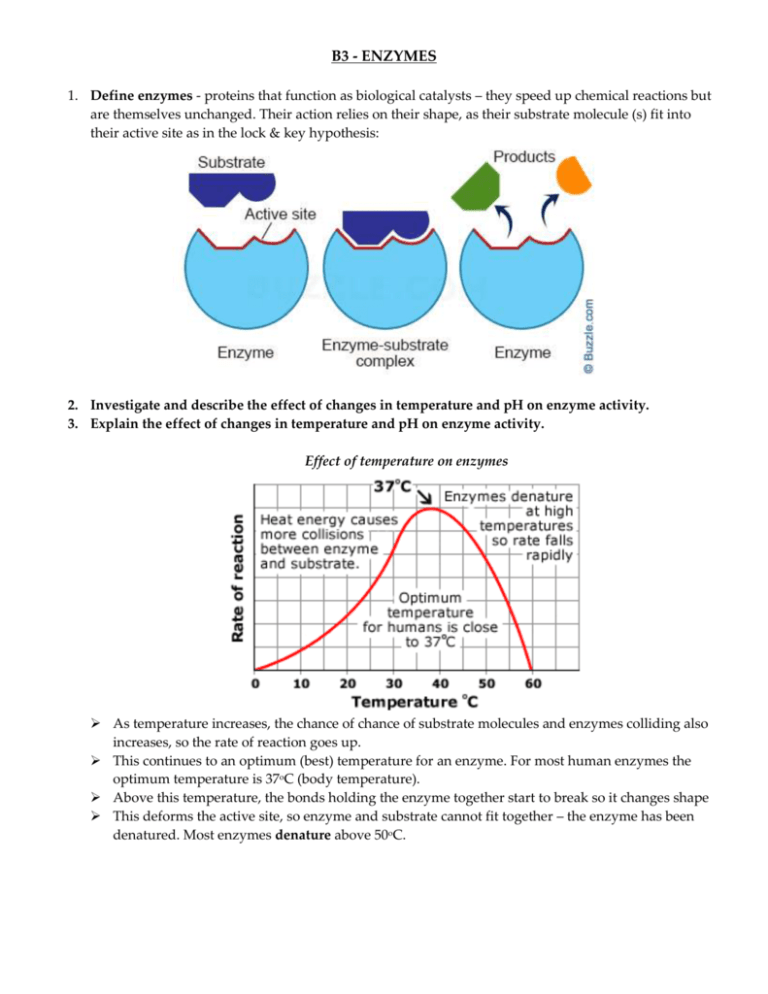
B3 - ENZYMES 1. Define enzymes - proteins that function as biological catalysts – they speed up chemical reactions but are themselves unchanged. Their action relies on their shape, as their substrate molecule (s) fit into their active site as in the lock & key hypothesis: 2. Investigate and describe the effect of changes in temperature and pH on enzyme activity. 3. Explain the effect of changes in temperature and pH on enzyme activity. Effect of temperature on enzymes As temperature increases, the chance of chance of substrate molecules and enzymes colliding also increases, so the rate of reaction goes up. This continues to an optimum (best) temperature for an enzyme. For most human enzymes the optimum temperature is 37oC (body temperature). Above this temperature, the bonds holding the enzyme together start to break so it changes shape This deforms the active site, so enzyme and substrate cannot fit together – the enzyme has been denatured. Most enzymes denature above 50oC. Effect of pH on enzymes The pH of a solution is how acidic or alkaline it is. Most human enzymes have an optimum pH of 7 (neutral). Some exceptions: Pepsin, a protease in the stomach has an acidic optimum (pH2); Lipase in the duodenum has an alkaline optimum (pH 9) Salivary amylase in the mouth prefers a slightly-acidic pH of 6.8. Extreme of pH affect the shape of enzymes, denaturing them.

